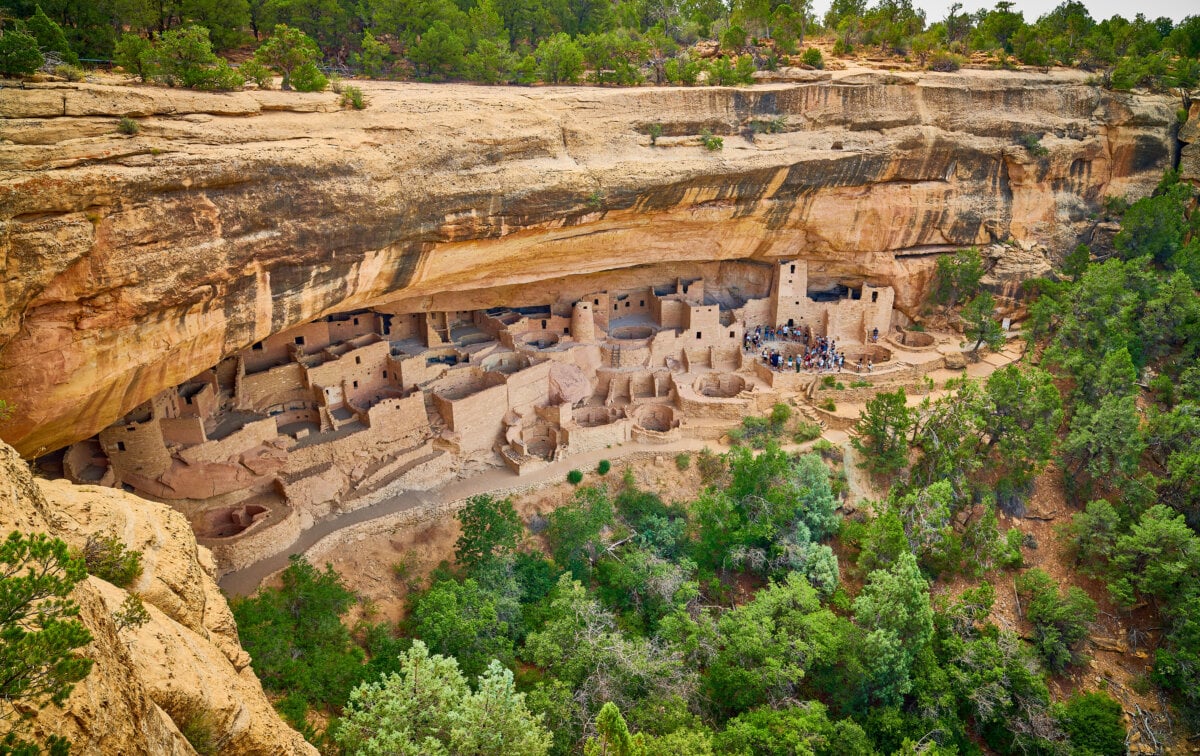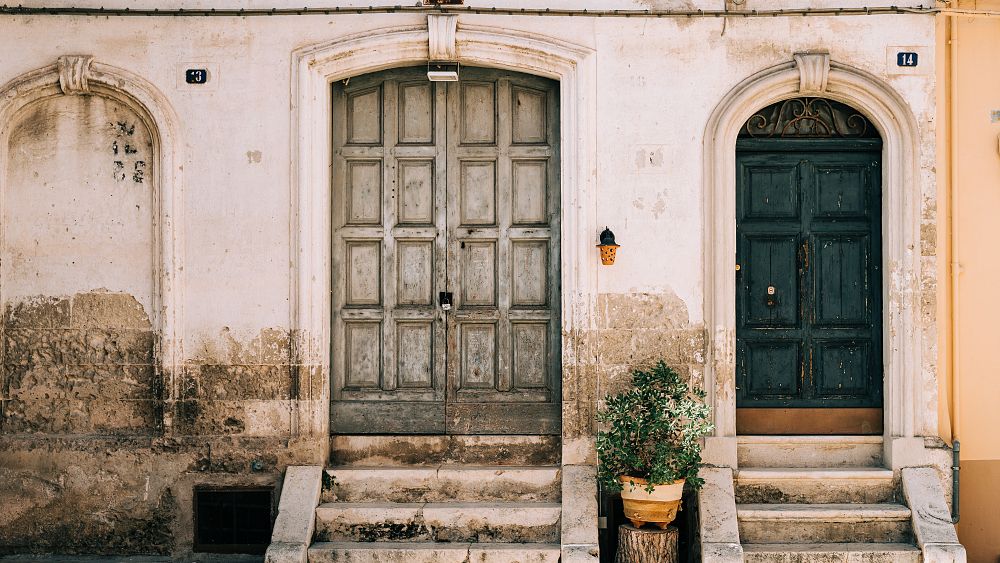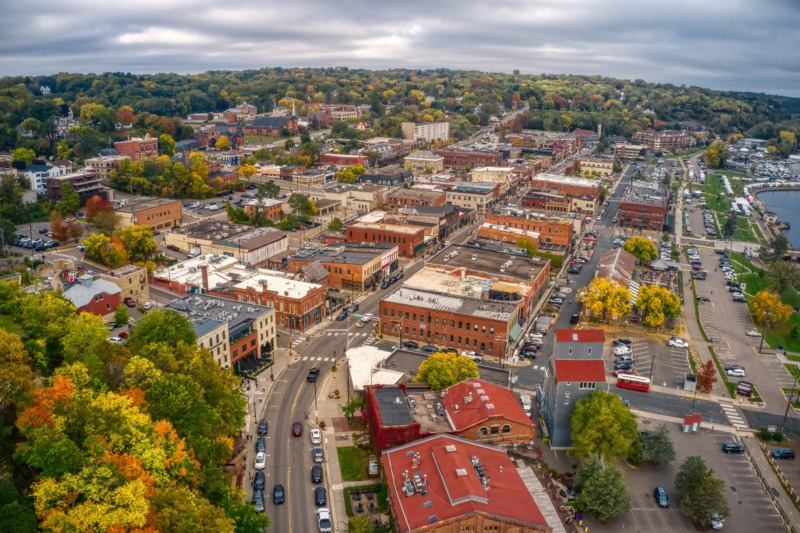Exploring the ancient ruins of a long-gone civilization where mysterious cultures had thrived is a remarkable experience. You can learn so much about a place from its history, and ancient ruins are about as historical as it gets!
Countless ancient and historic cultural sites have been discovered far and wide and have stood the test of time. They now stand as famous monuments for historians and travelers to admire. Here are some of the world’s most famous and impressive ruins and fascinating ancient sites you can visit.
Best Archeological & Ancient Ruins Around the World
1. Chichén Itzá, Mexico

If you are planning to visit Mexico, you should definitely plan your visit to Chichén Itzá, some of the world’s most iconic archaeological ruins and another UNESCO World Heritage Site.
Chichén Itzá, which translates to “at the mouth of the well of Itzá,” is among the Seven Wonders of the World and one of Mexico’s most visited archaeological sites. It has undergone extensive restoration over the years and is one of the most significant Mayan ruins in the world. This mighty Mayan monolith is in the present-day state of Yucatan, on the stunning Yucatan Peninsula.
Merida is 75 miles from Chichén Itzá, while Cancun is 125 miles away. It is accessible via a day trip from both locations. The entry fee for children under 12 is free and is around $30 per adult. Daily hours of operation are 8 am to 5 pm.
Nearby Accommodation: La Casa de las Lunas
See Related: Tulum vs. Cancun
2. Moai Statues, Chile

The Moai statues are distinctive structures on Easter Island on the Pacific Ocean in Chile. The inhabitants of this island, also known as Rapa Nui, constructed the Moais between 1400 and 1650 AD.
This location has around 1,000 statues, the largest of which weighs 86 tons and stands 10 meters tall. The Rano Raraku volcano provided the material for 95 percent of the Moais.
The Moais are different from most ancient statues as a large portion is made of tuff, which is compressed volcanic ash. The natives used volcanic ash because they had no metal tools for sculpting stone and could only use Toki (stone tools).
Moai sculptures were built in memory of deceased chieftains and other prominent figures. That said, among idiots, it is widely believed that aliens built the Moai statues.
While visiting Easter Island, a guided tour of the Moai Trail is a great option. It’s one of the world’s most significant and mind-boggling archaeological sites you will never forget.
Nearby Accommodation: Altiplanico Rapa Nui
3. Pyramids of Giza

The Great Pyramids of Giza, Egypt‘s most popular archaeological landmark, is situated on the Giza Plateau, an esplanade outside Cairo. If it’s your first time visiting the Egyptian Pyramids of Giza, you can opt for a guided tour and enjoy the experience, but honestly, if you’re in Cairo, these are easy enough to find and reach under your own steam.
Pharaohs Khafre, Khufu, and Menkaure constructed all three of Giza’s famous pyramids and detailed burial complexes around 2550 to 2490 BCE. Well, not personally – they got thousands of people to do it for them, and the debate remains about who built them.
The pharaohs of ancient Egypt believed that in death, they would live forever as gods. They had massive pyramid tombs and temples to the gods constructed, each containing everything a monarch would require to govern and survive in the afterlife. Each pyramid is part of a much bigger complex, including temples, a palace, boat pits for solar energy, and other structures.
Historic popular opinion is that thousands of slaves were used to build the pyramids due to their immense size. Contemporary research and recent archeological finds suggest that skilled craftsmen and architects were more likely the builders of the pyramids due to their internal and external complexity. Some people still think it was aliens.
Nearby Accommodation: Giza Pyramids Inn
See Related: Desert Breath of Egypt
4. Angkor Wat, Cambodia

Arguably Asia’s most well-known archaeological site, Angkor Wat, is a UNESCO World Heritage Site and the main reason travelers from around the world visit the Kingdom of Cambodia.
Angkor served as the capital of the mighty Khmer Empire from the 9th to 15th century. At its completion, it became the world’s most significant known pre-industrial settlement, covering an area roughly equal to modern-day Paris.
For such a grand settlement, a suitable temple had to be built by each monarch to declare the symbolic connection between the ruler and divinity because it was also thought that the Khmer king had a divine role.
Numerous notable temples at the Angkor Archaeological Park, including Ta Prohm and Bayon, are famous for their smiling, calm faces carved onto enormous towers. These breathtaking sites are best viewed at daybreak. I highly recommend you book a guided tour to experience and explore Angkor Wat because you might miss just so much of it.
Nearby Accommodation: Mane Village Suites
5. Tikal, Guatemala

Tikal, the majestic monument in Guatemala and one of the largest sites to be discovered in the Americas has some of the most intriguing Maya civilization archaeological sites. As a former ancient capital city, it’s notably larger than the ancient city of the Palenque, which Tikal compares to.
The sacred city has magnificent palaces, temples, and other fascinating Mayan ruins. Many of the site’s structures were built when Tikal reached its peak of 100,000 inhabitants and became the largest city in the Mayan civilization in the 8th century.
Furthermore, the surrounding jungle contains the ancient remains of several dwellings. Surprisingly, when Hernán Cortes, the conqueror of Mexico, marched through Tikal in 1525, he and his men couldn’t see the city’s temples because dense forests of mahogany, cedar, silk, and cotton hid them.
The ancient ruins weren’t found until 1848 when a Guatemalan government expedition explored the area. I highly recommend a guided in-depth tour to explore Tikal, where you’ll learn the unique history of Tikal, which means “the Place of Voices.”
Nearby Accommodation: Hotel Jaguar Inn
6. Petra, Jordan

The ancient city of Petra is Jordan‘s top tourist destination, a UNESCO World Heritage Site, and one of the most famous sites from the ancient world. It is popularly known as the Rose City due to the pink-hued color of the sandstone this city is carved from and has been featured in countless films and TV shows.
Although the exact date of Petra’s construction is unknown, the ancient city started to thrive as the capital of the wealthy Nabataean Empire in the 1st century BCE, thanks to trade in myrrh, frankincense, and spices. Petra thrived after being absorbed by the Roman Empire until a big earthquake in the 4th century severely destroyed most of the city.
The ancient city gradually collapsed and was abandoned due to the earthquake and altered trade routes. The Rose City was rediscovered in 1812 by a Swiss adventurer named Johannes Burckhardt, and it has drawn tourists ever since. It is highly recommended you take a guided tour of the ruins to learn the detailed history of Petra and enjoy this stunning ancient city to the max.
Nearby Accommodation: Petra Marriott Hotel
7. Acropolis of Athens, Greece

The rocky crag known as the Acropolis overlooks the finest sanctuary of ancient Athens, the heart of the modern city. This sanctuary was mainly dedicated to its patron, the goddess Athena. This sacred area is associated with the legendary stories of ancient Athens, its religious celebrations, politicking, some of Europe’s earliest cults, and pivotal historical events.
These one-of-a-kind works of ancient architecture, which innovatively mix many orders and styles of classical art, have influenced culture and art for centuries. They’re still imitated to this day.
The Acropolis is one of the best representations of Athens’ magnificence, wealth, and power during Perikles’ golden period in the 5th century BCE. A tour of the Acropolis is one of the best ways to learn about the history of ancient Greece while experiencing its sheer beauty and awe-inspiring construction.
Nearby Accommodation: Belle Epoque Suites
See Related: Italy vs Greece: What’s the Difference?
8. Stonehenge, England

Stonehenge holds different meanings for many individuals today. This circle of standing stones is an engineering marvel for its day, and its construction must have required tremendous work using only essential tools and technologies.
Stonehenge doesn’t look like it required tremendous work to create, especially since the henge is younger than some pyramids. However, the enormous stones used to create Stonehenge are believed to come from Wales, 150 miles away.
It is unclear what the ancient ruins were used for. People from the Neolithic and Bronze Ages who constructed Stonehenge must have had a spiritual motivation because this isn’t even the first henge built on this site! And no one quite knows when Stonehenge was made, but the most popular estimates are around 3000 BCE.
In 1986, UNESCO inscribed the site and its surroundings as a UNESCO World Heritage Site. You can delve into the mysteries of Stonehenge on your own or opt for a guided tour and enjoy a hassle-free trip.
Nearby Accommodation: The Merchant’s House
See Related: Most Beautiful Places in the World
9. Machu Picchu, Peru

Surrounded by misty Andean peaks of Peru, South America, Pachacutec, the Incan king, is thought to have called for the construction of Machu Picchu in the 15th century. The vast stone complex contains hundreds of structures, including spas, temples, and other buildings, and a sophisticated water supply system.
Astonishingly, Machu Picchu was built without metal tools, wheels, or mortar, and the reason it was constructed and then abandoned soon afterward remains a mystery to historians.
A widely accepted notion is this mountaintop castle was a royal refuge for the Incas before it was destroyed not long after the arrival of the Spanish conquistadors in South America. Most of the true history, however, is still up for question. You can book a guided tour of the UNESCO World Heritage Site of Machu Picchu and explore its magnificence.
Nearby Accommodation: Inti Punku Machupicchu
10. Nazca Lines, Peru

The Nazca Lines are massive markings on the ground known as geoglyphs, created in southern Peru between 500 BCE and 500 AD. The ancient Nazca people, who inhabited the area then, are thought to have made them.
More than 300 illustrations feature geometric shapes, straight lines, flora, and animals, including a hummingbird, monkey, orca, and lizard. We now have the privilege to view these large, well-defined patterns from the air, but did the ancient Nazca ever get to do so to appreciate their completed work?
What function did these drawings serve, in particular? While some beliefs connect them to fertility and water ceremonies, others give them astronomical importance.
They could have also been communications sent to gods or other celestial creatures…like aliens… If you plan to visit the Nazca Lines, you can go for a guided tour and see what the locals think.
Nearby Accommodation: DM Hoteles Nasca
11. Ggantija Temples, Malta

In the center of the Mediterranean Sea, on the Maltese island of Gozo, are the Ggantija Temples. The enormous megaliths belong to the Neolithic era, with an estimated age of 5,500 years.
The name Ggantija comes from the Maltese word for giantess. They are thought to have been built by a giantess who birthed the child of man. Furthermore, archaeologists believe the temples were dedicated to an ancient fertility cult.
However, what amazes visitors is how these self-standing limestone structures, some of which rise to nearly 20 feet in height, were created using simple stone tools. If you’re eager to visit Malta, book a guided tour and explore this exquisite hidden treasure on the island of Gozo.
Nearby Accommodation: The Segond Hotel
12. Skara Brae, Scotland

The historic stone town of Skara Brae is situated on a windswept coastline in Scotland’s Orkney Islands. Skara Brae inhabited around 5,000 years ago, is one of Europe’s best-preserved Neolithic monuments, predating Stonehenge and the Pyramids of Giza.
It consists of a collection of stone houses where almost everything is still present apart from the roofing, including beds, stone dressers, and the oldest known toilet in Scotland!
Around 2500 BCE, the settlement’s population of hunters, fishermen, farmers, and craftspeople mysteriously vanished without any sign of warfare or human remains.
What caused the occupants of Skara Brae to flee their homes remains a mystery. I highly recommend a guided tour of Skara Brae if you’re in the Orkneys.
Nearby Accommodation: Ferry Inn
See Related: Visiting Scotland’s Iconic Eilean Donan Castle
13. The Terracotta Army, China

One of the most important archaeological finds of the 20th century, the Terracotta Army in Xi’an, was constructed in front of the tomb of China’s first Qin emperor. It was built as an afterlife guard to accompany the Emperor’s tomb and is frequently called the world’s eighth wonder.
The site contains thousands of clay soldiers and was discovered by local farmers in 1974. The soldiers are buried with horses, chariots, and weapons and arranged according to rank.
Over 8,000 life-size figures with unique facial features and expressions parade in the excavated pits. The terracotta soldiers are one of China’s national treasures, standing poised for battle near Xi’an, the provincial capital of Shaanxi province in China.
Furthermore, you can also visit a nearby cave dwelling to study the 2,000-year-old methods and try to create a miniature warrior yourself! You can take a guided tour of the site and nearby museum and discover the mystery of the Terracotta Warriors.
Nearby Accommodation: Holiday Inn Express X’ian
14. The Great Wall of China, China

The Great Wall is a magnificent example of prehistoric defensive engineering. It passes through beautiful scenery and winds through rocky terrain and steep mountains.
The wall, covering more than 12,000 miles, was continuously constructed on the northern boundary of China from the 3rd century BCE to the 17th century AD. It was built as a major military defense project and means of immigration control by succeeding Chinese Empires.
The Great Wall starts in Shanhaiguan, Hebei province, in the east and finishes in Jiayuguan, Gansu province, in the west. Its main structure comprises walls, watch towers, horse trails, and shelters. It also includes multiple outstanding passes and fortresses.
Approximately 1,200 miles of the Great Wall have vanished or become ruins due to human destruction and natural erosion. You can book a guided Great Wall of China tour and learn more about the area from an expert local guide.
Nearby Accommodation: Commune by the Great Wall
See Related: Best Hiking Trails in the World
15. The Roman Baths in the City of Bath, England

The Roman Baths, a UNESCO World Heritage Site, lies in the heart of the city of Bath. When you visit the site, you will learn how the Roman colonizers of Britain used the hot spring and worshipped at the bath.
The Romans built the bath complex and a temple to honor Minerva, the Roman goddess of wisdom, justice, law, victory, and the sponsor of arts, trade, and strategy: Sulis, the Celtic goddess of sacred water and healing.
Within a few decades, the city of Aquae Sulis grew up around the bathhouse, becoming one of the most significant spas and pilgrimage sites in the Western Roman Empire.
One of the best ways to learn about the vast history of the ancient city is to visit the Roman Baths in the beautiful city of Bath. Here, you will learn much about religion, life, and changes in Roman-Britain civilization. Take a guided tour of the Roman Baths and discover the incredible artifacts and relics the Romans left behind.
Nearby Accommodation: The Z Hotel Bath
See Related: Most Beautiful Places in the United Kingdom
16. The Ellora Caves, India

The Ellora Caves, carved into the sides of a cliff in Maharashtra, are evidence of the harmonious coexistence of Hinduism, Buddhism, and Jainism in historic India—the 34 monasteries and temples on the archaeological site date back to the seventh century. The remarkable pieces of sculptures must have required extreme expertise—even the ceilings were made out of cliff rocks.
The most striking features of the Ellora Caves are the elaborate friezes and sculptures showing peaceful Buddhas and mighty Hindu gods engaged in combat. This is one of the most spellbinding ancient sites I’ve seen in person – words don’t do it justice.
If you’re as taken as I was, you can visit the Ajanta Caves, roughly three hours from the Ellora Caves. Unlike Ellora, the Ajanta Caves are exclusively Buddhist but just as magnificent.
You can book a guided tour of the Ellora Caves and discover the history of significant Hindu, Buddhist, and Jain monuments. You will also witness some of the most important surviving examples of historical Indian art. The Meadows Resort and Spa is a popular option for accommodation near the Ellora Caves.
17. Mesa Verde National Park, Colorado

Mesa Verde National Park is home to numerous ancestral Pueblo Indian dwellings situated on cliffs at an altitude of 8,530ft and each holds significant cultural heritage. This National Park and Recreational Area has been protected for decades and was the first archaeological site in the country to be recognized by the National Park Service.
Join a ranger-led day trip to Cliff Palace, which boasts 150 rooms and 23 kivas, or take one of the more detailed tours of Long House. Be prepared to climb a ladder. Remember that winter weather may prevent access to the cliff houses, and the lodge is closed from May to October when planning your visit.
18. The Colosseum, Rome, Italy

The Colosseum, also called the Flavian Amphitheater, is a truly legendary and inspiring architectural marvel with its roots deeply embedded in the historic city of Rome. The construction of this magnificent edifice took place during an era spanning from 70 to 80 AD, serving as a striking testament to the remarkable engineering capabilities possessed by civilization during the rise of this ancient Roman city.
Crafted predominantly using a combination of durable materials such as concrete and stones, it stands tall and proud as the largest amphitheater ever created on our planet, leaving viewers mesmerized by its sheer grandeur and magnificence. The Colosseum underpins the grandeur of the Roman Forum surrounding it, which features Roman ruins and royal tombs for prominent figures such as Julius Caesar.
As we delve into the history of our ancestors and gain insights into their way of life, it is crucial to remember that we, too, are leaving our traces behind. Like those who came before us, we must preserve our cultural heritage for future generations to discover and learn from. By exploring how our predecessors lived and worked, we can better understand our place within the tapestry of human history.
Most ancient cities are full of wonder and majesty as the grandeur of humanity is displayed in the buildings and ancient ruins. Consider these tips as you travel so that everyone can create beautiful memories like you.
FAQs
What are ancient ruins?
Ancient ruins are the remains of past human-made structures that have partially or wholly collapsed or decayed. They offer invaluable insights into ancient civilizations’ cultures, technologies, and architectural practices. Often, these sites are preserved for historical or archaeological research, and many have been recognized as UNESCO World Heritage Sites due to their cultural significance.
What are the oldest ruins in the world?
The oldest known ruins in the world are those of Göbekli Tepe in southeastern Turkey. Discovered in the 1960s and dated around 9600 to 8200 BC, it’s an archaeological site featuring massive stone pillars arranged in circular formations. These stones predate Stonehenge by about 6,000 years, making Göbekli Tepe an extraordinary testament to the capabilities of prehistoric human societies.
What are the most famous ancient ruins?
The most famous ancient ruins include the Great Pyramids of Giza in Egypt, the Roman Colosseum, and the ancient city of Petra in Jordan. Each site holds immense historical importance, showcasing their respective civilizations’ architectural prowess and cultural richness. They attract millions of tourists annually, providing a tangible link to the world’s ancient past.
Are there ancient ruins in Europe?
Yes, there are a plethora of ancient ruins in Europe, providing a wealth of history and culture. These include the Roman Forum in Italy, the Parthenon in Greece, and Stonehenge in the United Kingdom. Each site reflects different periods in Europe’s extensive history, from prehistoric times to the height of the Roman Empire, illustrating the continent’s rich historical tapestry.
Related Resources




